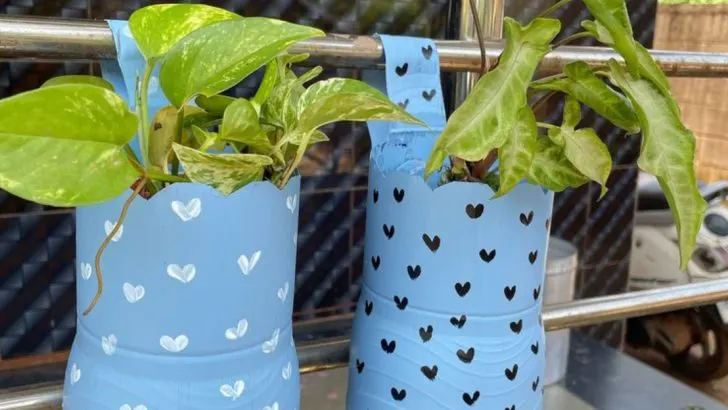Gardeners know how easy it is to accumulate a surprising amount of plastic waste—from seed trays to empty soil bags and plant pots. But what if those so-called leftovers weren’t waste at all, but the beginning of something useful and clever? With just a bit of creativity, your discarded plastic can become garden gold.
In this guide, we explore 15 innovative ways to give garden plastics a second life. From turning old nursery pots into mini compost bins, to transforming seedling trays into organizers, and repurposing packaging into DIY watering systems, the possibilities are both eco-friendly and budget-saving. These ideas not only help the planet but also keep your garden more organized, efficient, and sustainable.
If you’re ready to cut down on clutter and give your plastic waste a purpose, this list will inspire you to look at your trash differently. It’s time to reduce, reuse, and replant—with a little ingenuity and a lot of heart.
Plastic Bottle Watering Globes

Ever struggled with inconsistent watering? Plastic bottle watering globes might just be your garden’s new best friend. Simply fill a clean plastic bottle with water, invert it, and bury the neck into the soil. This method provides a slow, consistent water supply and is perfect for forgetful gardeners. Plus, you can decorate the bottles to add a splash of color. Whether you’re at home or on vacation, your plants remain hydrated. This simple hack saves time and water while reducing plastic waste. It’s a win-win for you and the environment.
DIY Garden Cloche
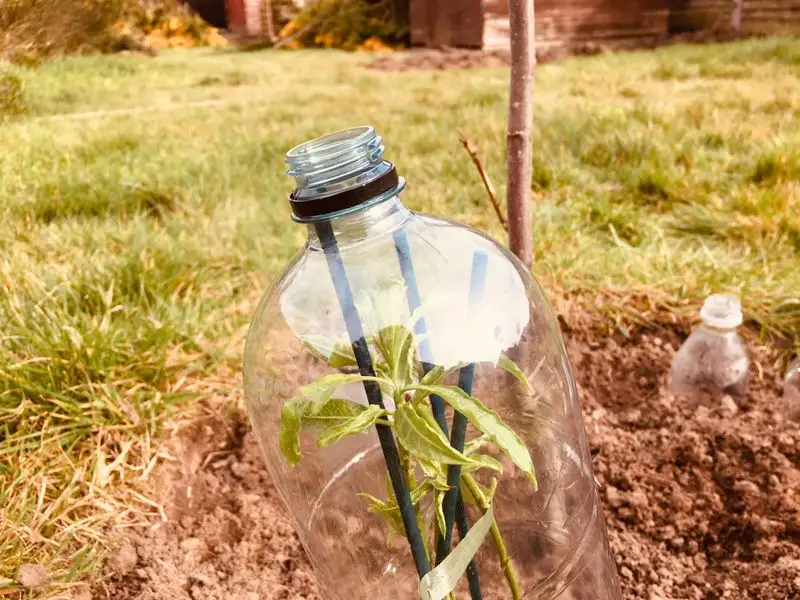
In the early days of growing season, protecting tender seedlings is crucial. A DIY garden cloche can be crafted from a large plastic bottle. By cutting the bottom off, you create a mini greenhouse that traps warmth and moisture. This is especially handy during unexpected cold snaps. Besides offering protection, a cloche shields plants from pests and curious pets. It’s a simple, cost-effective solution that gives your greens a fighting chance. Transform those large containers into valuable garden assets instead of trash.
Creative Planter Designs
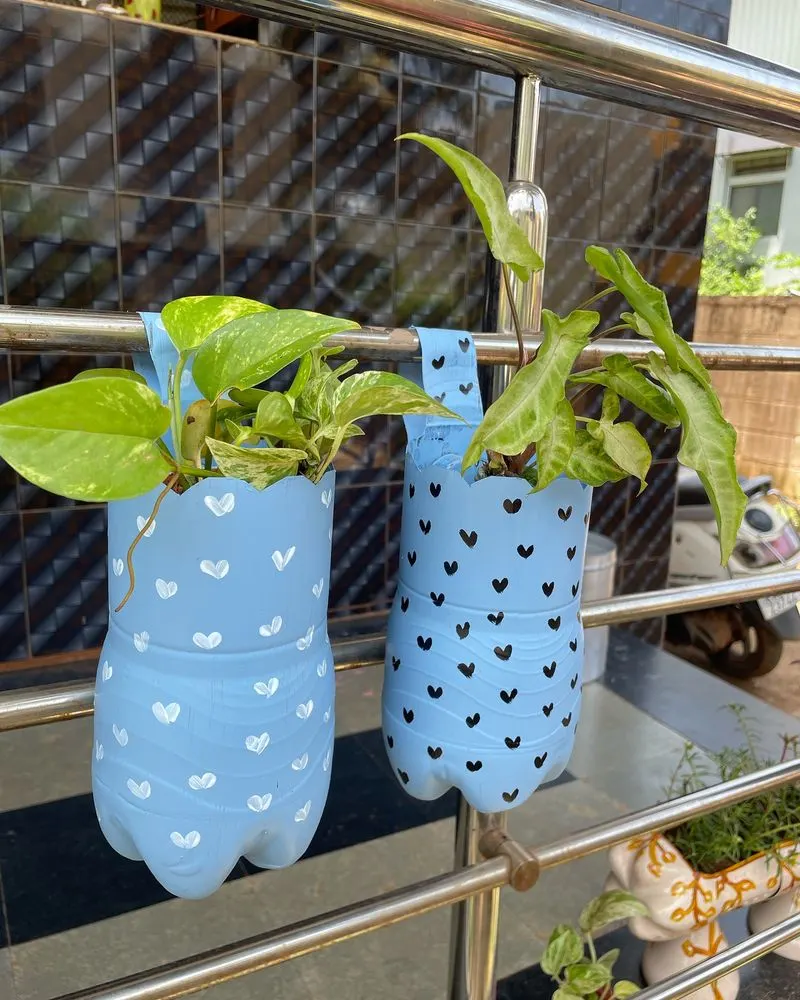
Why buy expensive planters when you can make your own? Cut plastic containers into imaginative shapes, paint them, and mount them onto walls or fences. This approach not only recycles plastic but also adds personality to your space. Versatility is a bonus; they can be hung, stacked, or placed on the ground. Furthermore, each planter can be uniquely styled to suit your aesthetic preferences. It’s an ideal project for families looking to engage in a creative and eco-friendly activity together.
Bird Feeder Innovations
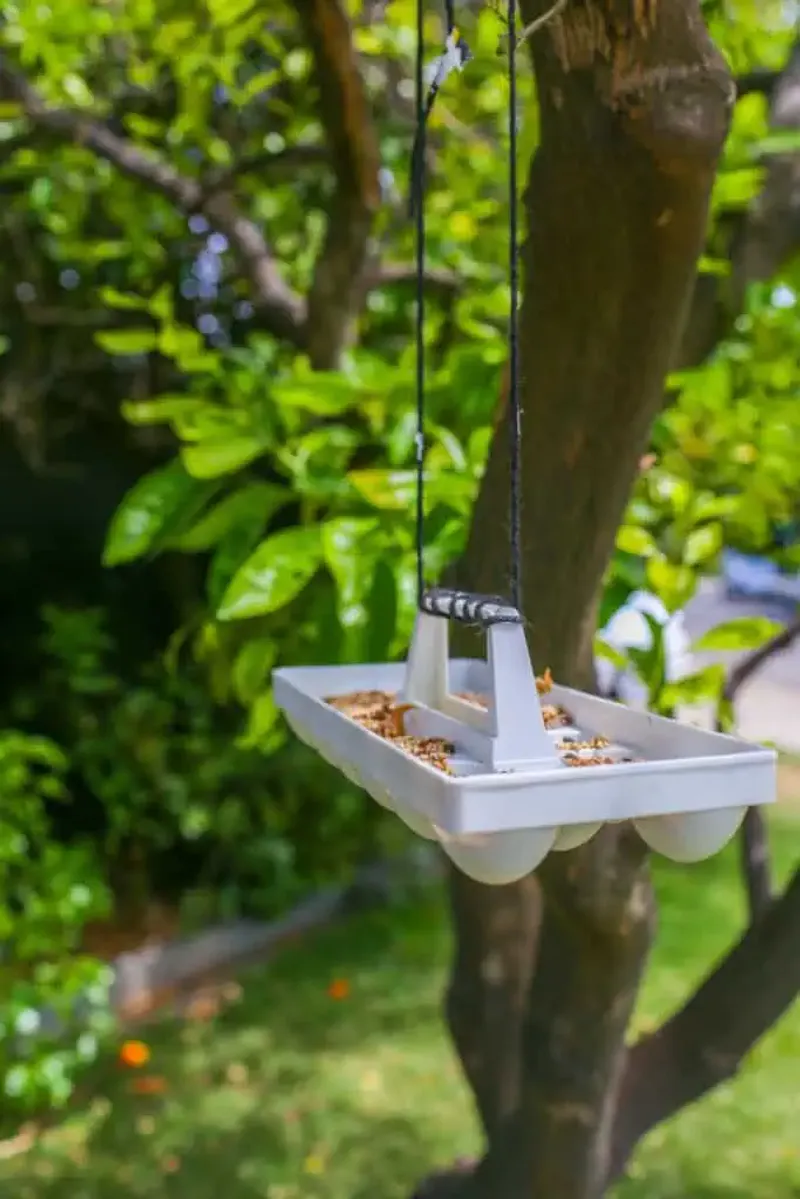
Bird lovers can transform garden plastic waste into delightful feeders. Cut out sections of a plastic bottle to create openings, fill with seeds, and hang in a tree. Not only do you provide food for your feathered friends, but you also reduce plastic waste. You can experiment with various designs, adding perches or painting the bottles for additional charm. Beyond mere functionality, these feeders offer a chance to observe local wildlife up close. It’s a rewarding endeavor for both you and the birds.
Plastic Bag Weave Mats
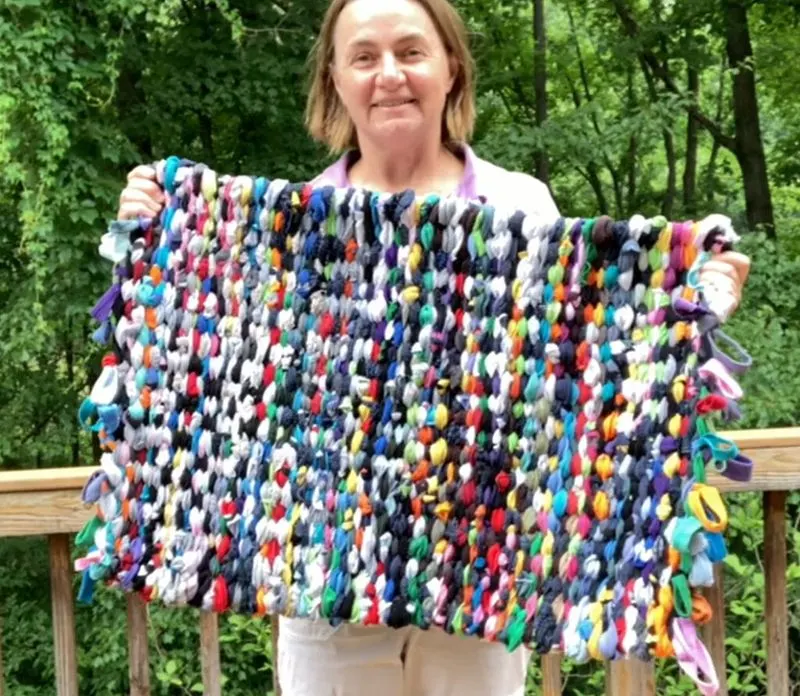
Turn garden seating into a colorful and sustainable venture with woven plastic bag mats. Gather discarded plastic bags, cut them into strips, and weave them into durable mats. They’re perfect for outdoor use, resistant to weather, and easy to clean. Besides serving as a creative outlet, this project reduces plastic waste significantly. The vibrant designs can be tailored to match any garden theme or personal preference. Such mats offer a practical and eco-friendly solution for garden decor.
Pallet and Plastic Compost Bin
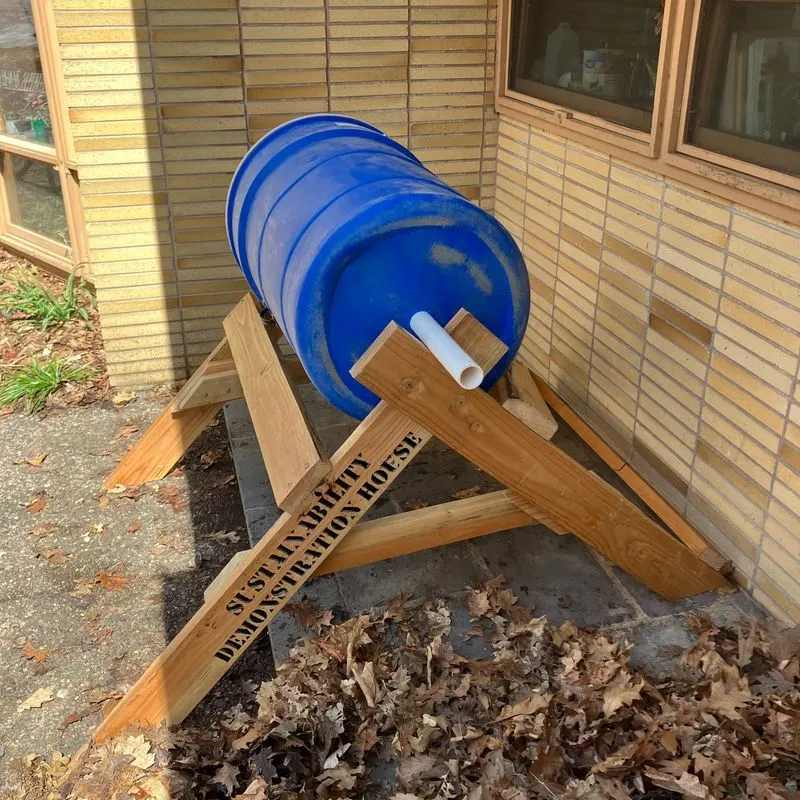
Combine pallets and plastic sheets to create an efficient compost bin. This structure utilizes waste to produce nutrient-rich compost for your garden. The wooden pallets provide sturdy support while the plastic keeps heat and moisture in. It’s an excellent way to recycle larger plastic materials. Regular turning of the compost accelerates decomposition, enriching your soil. This project not only reduces waste but also enhances your garden’s productivity. Composting becomes an eco-friendly affair with this simple setup.
Garden Tool Holders
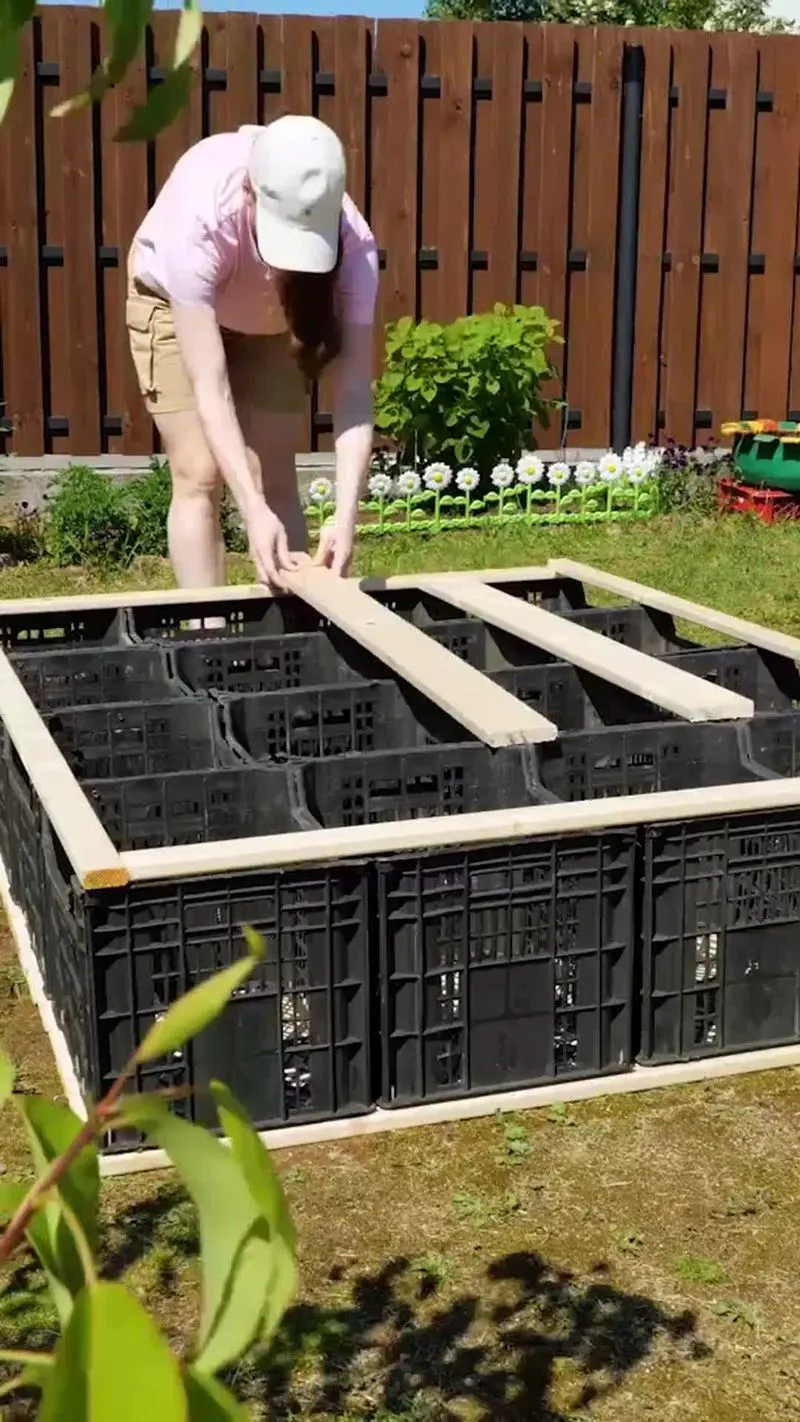
Repurpose plastic bottles into handy garden tool holders. Cut the bottles to fit the size of your tools and attach them to a board. This way, your tools are always within reach and well-organized. This strategy declutters your shed and gives plastic waste a second life. It’s a straightforward, effective method to keep your gardening space tidy. Moreover, these holders can be customized in size and color, adding a personal touch to your storage solutions. A win for organization and recycling alike.
Plastic Lid Garden Labels

Keep track of your plants with colorful garden labels crafted from plastic lids. Paint and label each lid and place it at the base of your plants. This method provides an easy way to identify your seedlings, especially in a crowded garden. Reusing plastic lids as markers not only saves money but also contributes to sustainable gardening practices. The labels are weather-resistant and durable, making them ideal for outdoor use. A creative solution for reducing plastic waste in the garden.
Plastic Bottle Drip Irrigation
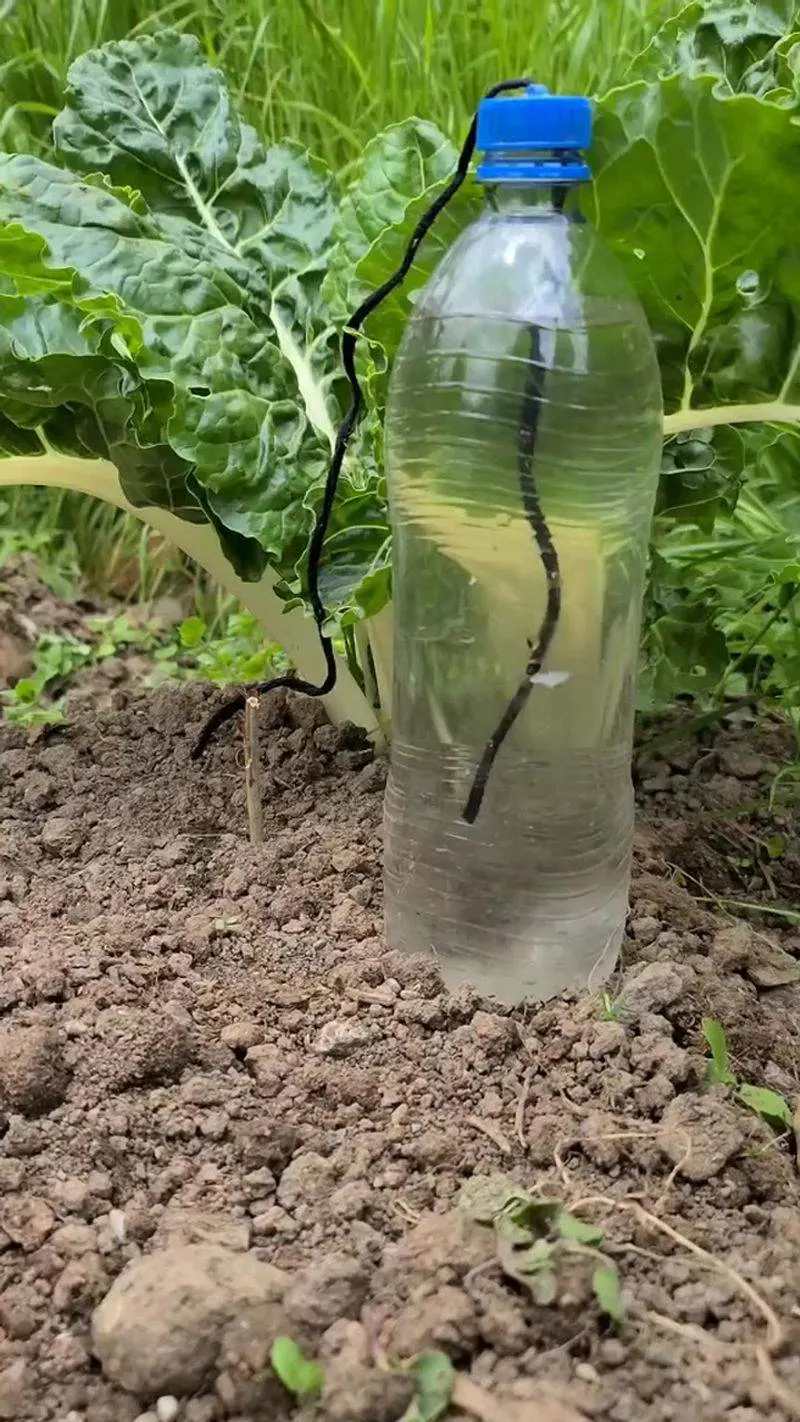
Hydration is vital for a thriving garden, and a plastic bottle drip irrigation system can help. Drill small holes in a bottle, bury it near plant roots, and fill with water. This technique ensures efficient water delivery directly to where it’s needed. The slow release conserves water and reduces runoff. It’s particularly useful in dry climates or water-restricted areas. Gardeners find satisfaction in this low-cost, resourceful watering method. By reusing plastic bottles, you’re practicing sustainable gardening.
Hanging Garden Vertical Planters
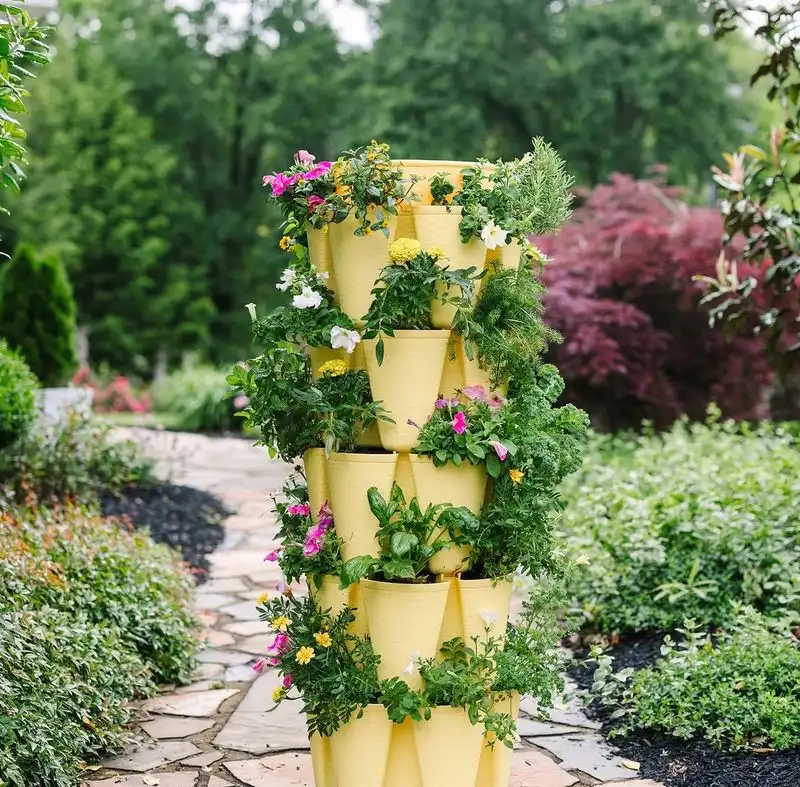
Maximize limited space with vertical planters made from plastic bottles. By cutting and stacking them, you create an innovative way to grow herbs and flowers. This method is particularly useful in urban settings where ground space is scarce. The planters can be mounted on walls or hung from balconies, adding greenery to any environment. Not only do they provide a habitat for plants, but they also recycle plastic waste. Vertical gardens offer a fresh perspective on gardening in tight spaces.
Plastic Spoon Garden Allies
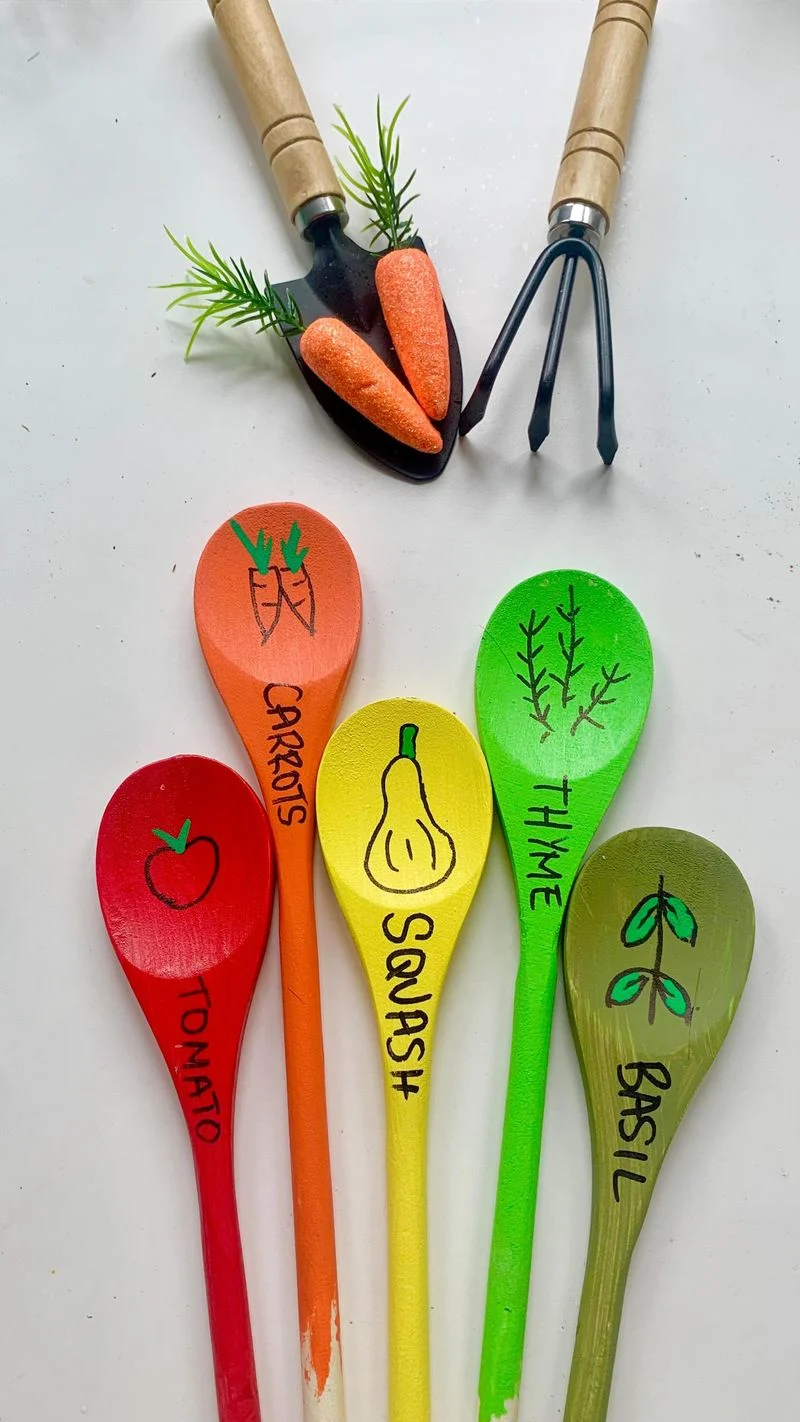
Who would have thought plastic spoons could be garden allies? Decorate them with paint, label your herbs, and plant them in the soil. These spoons serve as charming markers that help identify plants. It’s a simple way to upcycle single-use plastics into functional garden tools. The spoons withstand weather conditions, making them durable markers. An easy project that adds color and character to your garden while reducing waste. Watch your garden grow with these handy, recycled identifiers.
Seedling Starter Pots

Begin your gardening journey with seedling starter pots crafted from plastic cups. Punch drainage holes, fill with soil, and plant your seeds. These pots are ideal for nurturing young plants before transplanting them outdoors. This repurposing reduces plastic waste and provides an inexpensive alternative to buying new pots. Seedlings thrive in these makeshift pots, gradually adapting to their environment before moving to the garden. A great way to embrace sustainability from the very start of the growth process.
Plastic Herb Garden Towers

Transform plastic bottles into herb garden towers for vertical growing. Cut and stack bottles to form a tower, filling with soil and herbs. This design makes efficient use of vertical space, perfect for patios or small yards. The towers are not just functional but also a striking garden feature. They offer easy access to fresh herbs and contribute to recycling efforts. Whether you’re growing basil or mint, these towers provide a sustainable solution to garden in restricted areas.

